Nitro Burnin' GameSpotting
Welcome to another top-fuel edition of everyone's favorite video game editorial, where you pay for the whole seat, but you only need the edge!
Welcome to another top-fuel edition of everyone's favorite video game editorial, where you pay for the whole seat, but you only need the edge! Watch in amazement while the GameSpot editors shake the ground with funny-car power as they discuss Doom 3, extracurricular activities in sports games, and the academia of video games--all in under 10 seconds! And if you missed Truckzilla at last week's county fair, you won't want to miss our forums this Sunday, Sunday, Sunday!
Greg Kasavin/Executive Editor
"Let me present to you now the top 20 things to do while passing the minutes until August 3 (or thereabouts) rolls around."
Steve Palley/Associate Editor, Mobile
"However much the new media permeates our culture at present time, its ascendancy will be incomplete until the White Towers of academia coronate it."
Bob Colayco/Features Editor
"How long will it be before sports games attempt to model even more serious off-the-field problems?"
Avery Score/Games Editor, Mobile
"So, the next logical question would be, 'What is it about these mobile and online titles--that sell for $5 and $20, respectively--that appeals to female gamers?'"
James Yu/Senior Hardware Editor
"If you're going to put down a stack of bills for a new video card, why not pick one that will be able to run Doom 3 and Half-Life 2? The trouble is that people have been upgrading for Doom 3 since the GeForce 3."
Ryan Mac Donald/Executive Producer, GameSpot Live
"Are Fight Night, Counter-Strike, or Battlefield games that I will enjoy for the rest of my life?"
Tyler Winegarner/Associate Producer, GameSpot Live
"Oh. So what he's telling me is that I still suck..."
Cory Birdsong/GuestSpotter
"There are so many off-putting elements to the average Final Fantasy game that I'm still surprised at the mainstream popularity they've managed to garner."
This Could Be You, Jr./Imaginary GuestSpotter
Want to give a shout out to your favorite game, favorite game developer, or favorite game controller? Read up on our GuestSpotting FAQ to find out how!
| Greg Kasavin Executive Editor |
Top 20 Things to do While Waiting for Doom 3
Last week the first words out of my mouth in this space were "'When it's done' is no longer acceptable as a release date as far as I'm concerned." But then Doom 3 went gold, and now I'm sitting here eating crow.
I just want to play Doom 3. Waiting for that game since it was announced years ago has been something of an emotional roller coaster--like so many other people, I was blown away by the game's first appearance at E3. But then, more recently, my excitement for the game waned somewhat as the "when it's done" release got delayed--and especially when id Software announced that the PC version of the game wouldn't ship with a cooperative multiplayer mode, which was one of my favorite aspects of the previous Doom games. But now that Doom 3's release is imminent, I realize I can't wait to get my hands on the game to see how it finally turned out.
"Can't wait" is just a figure of speech, of course. If you're like me, then you will wait. But let me help make it easier on you--let me present to you now the top 20 things to do while passing the minutes until August 3 (or thereabouts) rolls around.
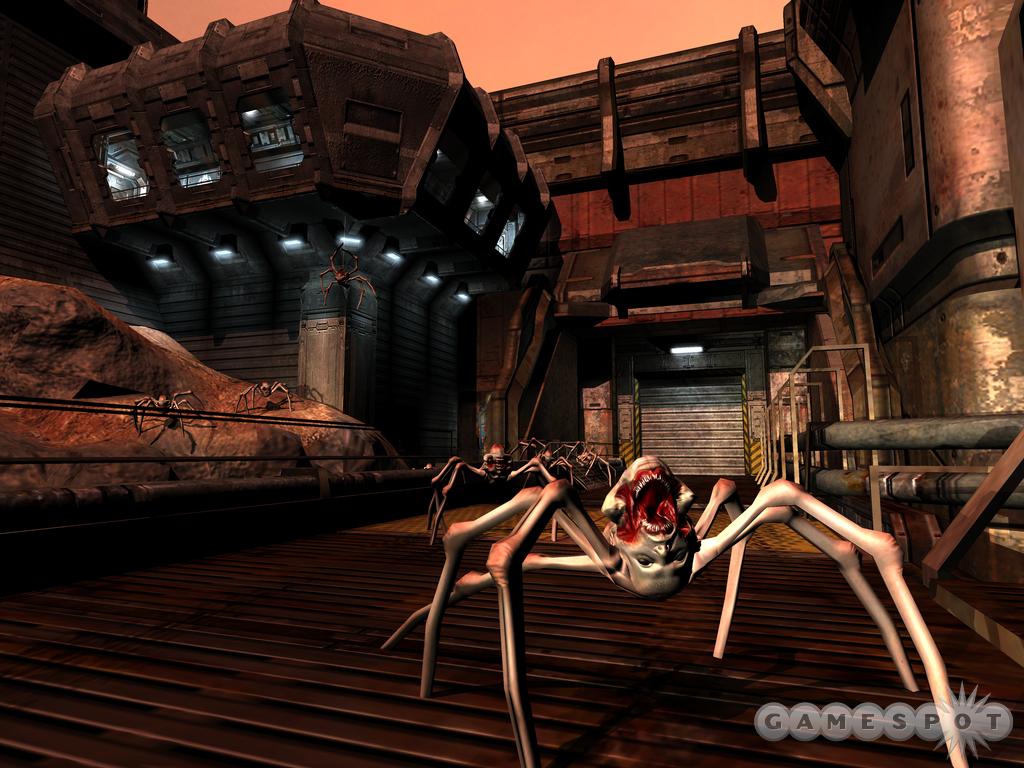
20. Consider the Upside-Down Spider.
Doom detractors insist that the game's vision of a futuristic, science fiction hell-horror is sophomoric--featuring creatures and environments that might have sprung from the mind of a 15-year-old trying to pass the time in a boring class. That mind...might as well have been mine. You should have seen my high school history notes. They looked like a Doom 3 design document. I swear.
19. Play Far Cry
It has got great graphics, guns, and scary monsters. It's one of the best games so far this year. We'll just have to see how Doom 3 stacks up.
18. Read Masters of Doom
It's about the trials and tribulations of a bunch of very unusual people situated in Texas. How many game developers get a book written about them?
17. Read up About Doom 3
Admit it: You've looked at all the screenshots, but you haven't actually read up on all the gory details. Look, it just wouldn't be right if I didn't plug this site's content as part of the top 20.
16. Play Chronicles of Riddick: Escape From Butcher Bay
It has got great graphics, guns, and scary monsters. It's one of the best games so far this year. We'll just have to see how Doom 3 stacks up.
15. Watch Doom 3 Videos
Is Doom 3 actually going to look as good as these videos? Consider the frames per second you'll end up getting on your machine. Maybe if you ran the game in a very, very small window...
14. Download Doom 95
Play the original all over again, and hope that id Software has learned a great deal between now and then on how to craft a good single-player experience.
13. Check up on John Romero
Sure, he hasn't worked at id in years, but you know that deep in your heart of hearts, you still feel like the spirit of John Romero lives on in id Software's next game. Not that John Romero is dead. But I totally killed him a bunch of times at the end of Doom II.
12. Play Painkiller
It has got great graphics, guns, and scary monsters. It's one of the best games so far this year. We'll just have to see how Doom 3 stacks up.
11. Forget all About Half-Life 2 for a Little While
Gordon who?
10. Set Aside $60
Activision and id Software want you to pay a premium for their new game! Either it's that good or they're some downright greedy bastards! Awesome!
9. Brush up on Your Lovecraft
It's more to do with Quake than Doom, but if you're wondering about the origin of guys like Chthon and Shub Niggurath, then look here.
8. Invest in a new Graphics Card
Too bad GameSpot doesn't have a hardware site to tell you which one to get. For the time being, you could always e-mail James Yu.
7. Go Back Through id Software's .plan Files
For those of you who don't know, .plans are kind of like blogs, but without all the whiny angst.
6. Read the Chainsaws FAQ
Great Moments in Gaming #3: Finding the chainsaw for the first time in the shareware episode of Doom.
5. Consider the Structure of Dante's Inferno
That's some messed up level design. This here's the original road map through hell, though E1M6 makes for a much better deathmatch, that's for sure.

4. Follow NASA's Mars Exploration Program
Maybe they'll find a slipgate or a hellhole or something. Sometimes I kind of hope so.
3. Adjust the Gamma Correction on Your Monitor
In Doom 3, for some stupid reason, you won't be able to use a gun and a flashlight at the same time. Adjust your gamma--problem solved.
2. Read the Official Doom / Doom II FAQ
This is perhaps the grandfather of all great FAQs. You know what? It's a great read.
1. Complain on Message Boards
Everybody's doing it.
| Steve Palley Associate Editor, Mobile |
It's Academic, Really
Welcome to the early 21st century. We, lucky people of the future that we are, have ready access to video gaming technology that can actualize dreams in a seven-digit spray of triangles and whirling, semi-intelligent algorithms. Photorealism isn't here yet, but it will be within the blink of an eye--and now full-motion video is old hat. Naturally, we couldn't have done it without a functional sales model and large-scale distribution. Video gaming is well into its third decade as a broad-based consumer product. It generates tens of billions of dollars a year, and it has finally leapfrogged film as the entertainment market's most lucrative form of media.
The gaming tide is gradually suffusing every facet of American life, even as the movies once did. A few examples are in order. Vin Diesel, stealing a march on the competition, has founded his own video game studio to leverage his larger-than-life characters off the screen and into more appropriate, interactive venues. The US Army uses video games like Full Spectrum Warrior to train their soldiers in squad-based combat, and the Marine Corps and the Air Force aren't far behind. It's a rare professional athlete that would eschew box placement on EA's next sports game. You yourself may spend more time plotting with your squadmates over an Xbox Live headset than you do speaking to them telephonically.
Please check your outmoded cultural detritus at the door--your stodgy entertainment forms are of little interest here, to anyone other than antiquarians and mountain men. But don't let me catch you playing Riddick when you should be researching that paper on French New Wave cinema, bucko. You want to get into grad school, right?

We've bought video gaming's economic line completely, and it would be difficult to argue against the burgeoning social impact of the phenomena. But, however much the new media permeates our culture at present time, its ascendancy will be incomplete until the White Towers of academia coronate it.
Video games have long since matured to the point of accepting functional and technical criticism. You're reading GameSpot at the moment, right? I posit that there will soon be a sufficient corpus of video game work to support a more theory-oriented, academic brand of criticism, built upon equal parts social analysis, history, and artistic interpretation. This process takes time. Keep in mind that film criticism didn't develop instantaneously, either. The first Academy Awards weren't held until 1929, nearly a quarter-century after the introduction of the feature film. Film studies didn't gain much purchase as an academic discipline until the 1960s, and television studies followed a decade or two later.
Am I crazy for suggesting that such an obviously venal enterprise as video games could transcend the merely commercial and exist on the same plane as architecture, theater, literature, music, film, and television? I will readily admit that the majority of video games are targeted at the magic demographic of 18- to 34-year-old males; therefore, they are hardly universal in scope and neither are they ambitious in topic. Most developers aren't independent of economic imperatives, which generally trump artistic mores. It's a hell of a lot easier to make a World Wrestling Entertainment game than it is to read a Pynchon or Murakami novel, let alone make a game out it. And even that rare game that generates some kind of spiritual resonance could be called a fluke. When I asked for his opinion on the subject, a superior of mine told me that art should be intentional in its creation. Gamers may experience a visceral or intellectual reaction to a particular game, but the catalyst for this reaction is usually superb craftsmanship, and not often intentional guidance on the part of the creator.
And what of this supposed creator? How much control can an individual craftsman have over the creative process in video games, which now involve huge teams of programmers, artists, and designers? Some might argue that video game production is incapable of supporting auteurs; in video games, as in film, the budgets are too high and the risks involved are too great to allow any one artist complete, "final cut" control over the end product. But the industry is changing in this respect, as well. There are some video game designers whose work is so consistently brilliant that their names are attached to their products, even if unofficially. Shigeru Miyamoto, Will Wright, and "Igo" Igarashi are a few examples that spring immediately to mind.
Designers like these may not have carte blanche from their studios and underwriters, but they certainly command a lot of influence over the shape of the project. Their creative imprimatur is apparent to experienced gamers and cognoscenti. I would say that the work of some of these designers isn't just canonical: it's thematically unified artwork. Do they make money on the final product? They certainly hope to. But Charles Dickens made a fortune writing serial novels, which eventually turned into ammunition for many a doctorate candidate's thesis.
There are video games that have something to offer beyond their base entertainment value--even without so-called literary content. They are the media in which all of the previously mentioned art forms can be combined into a single multidisciplinary edifice. Dance equates to fighting choreography, level design to architecture, artwork and character modeling to painting and sculpture, writing to writing, full-motion video to film. In my experience, the very best video games duplicate the type of universal semiotic structure that is present in myth and legend. They could be accessible to anyone--if they were marketed that way. In terms of ambition, what separates the fantastically detailed, immense universes of Final Fantasy or Ultima, for instance, from J.R.R. Tolkien's Middle-earth--besides the agreement of scholars and intellectuals?
Academic programs centered on the technical aspects of video game production have begun to pop up in universities worldwide. Notables include the Massachusetts Institute of Technology's Media Lab programs, the University of Southern California's Video Game Design minor, and Carnegie Mellon's Entertainment Technology Center course of study, which offers a master's degree. Academic criticism will inevitably lag behind until enough interested young people decide that there's more to their video gaming experience than meets the eye. The context of video games may be different than film at this early point in its evolution, but its impact as a cultural medium will eventually be very much the same.
So, which is higher? Your test scores, or your Symphony of the Night completion percentage?
| Bob Colayco Features Editor |
Truth is Stranger than Games
Sports gamers are a demanding lot. Every year the games have to look and feel even better than the previous year's edition. Playbooks have to get larger, player models have to get more detailed, and animations more varied. Every minute of development time needs to be focused on making the video game seem realistic and true to life.

Electronic Arts' slate of football games will up the realism ante in an interesting way--off-the-field. In NCAA Football 2005, your players will sometimes run into disciplinary problems, such as falling grades or missed classes. Like today's college football coaches, it's up to you to exert discipline and keep the program clean, lest you face NCAA sanctions. Madden 2005 will offer "talk radio" from nationally syndicated host Tony Bruno. Just like a real-life general manager, you'll face media criticism and have to handle players moping and griping in public about playing time and other issues.

These new features bring up an interesting question. How long will it be before sports games attempt to model even more serious off-the-field problems? Everyone knows that the hottest sports topic of the day is LA Lakers superstar Kobe Bryant's impending trial for the sexual assault of a Colorado hotel worker. But issues like these are unfortunately all too common and they arise all the time in every major sport. Major League Baseball sluggers and international track stars have been competing under the specter of steroid allegations, specifically the scandal involving BALCO (Bay Area Laboratory Co-Operative). The Baltimore Ravens' star running back, Jamal Lewis, has been indicted on charges that he conspired to buy five kilograms of cocaine with intent to distribute. The entire Baylor University athletic program was rocked to its core when a men's basketball player was not only murdered last year, but the head coach at the time also attempted to provide authorities with false information regarding the slaying, for the trivial purpose of covering up recruiting violations.
Given the amount of control the leagues have over the content of licensed video games, I'm already a little surprised that they've allowed developers to begin straying into the area of off-the-field controversy. It wasn't that long ago that the fighting feature in EA's NHL series disappeared, purportedly to appease a sensitive league (although all recent NHL games have fighting in it). But how far will this new trend take us? Will it be possible to play a dynasty mode in a future NHL game and have a random event where our star winger wraps his Ferrari around a pillar, seriously injuring himself and killing a teammate? Imagine breaking the season home run record in a baseball game, and then having the record thrown out because your slugger got busted for steroid use. How about an NBA game where our Hall of Fame guard and center can't get along with each other and demand trades or coaching changes?
It's doubtful that the leagues would allow game developers to create randomized controversial events. Imagine the crazy libel fallout that would ensue as game players take screen caps of headlines like "[insert star player here] arrested for murder!" or "[other star player] hit with 12 simultaneous paternity suits!" and post them online. One thing remains certain though: No simulation could ever truly match the drama of real life. Truth is always stranger than fiction.
| Avery Score Games Editor, Mobile |
It Won't Be Casual--I'll Wear a Tie
Women are fantastic, complex creatures. After numerous attempts to define and understand them, Sigmund Schlomo Freud resigned himself to the fact that the fairer sex would remain--to him--an enigma of implacable mystery. Sharing Schlomo's noble background as the progeny of Jewish merchants, but lacking his understanding of when, exactly, "a cigar is just a cigar," I too am prepared to concede my defeat. Game developers, seeking to tap the disposable income of the ever-elusive female demographic, aren't likely to give up so easily.
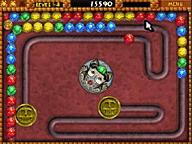
According to a survey conducted by the Interactive Digital Software Association, women now comprise 43 percent of the PC gaming market and 35 percent of console gamers. However, women have represented the majority of Internet users since about 2000. They also dominate the casual, online gaming scene, commanding 65 percent of its market share. This latter group has been dubbed the "bored housewives" of video gaming. The mobile arena, which also relies on a casual gaming philosophy, paints a similar picture, with a user base that is reportedly 58 percent female. So, the next logical question would be, "What is it about these mobile and online titles--that sell for $5 and $20, respectively--that appeals to female gamers?"
If you've ever played Xbox Live for any extended period of time, you'll know that its testosterone-fueled participants are wont to descend upon any girl gamer like vultures scooping up a limp field flower. As one GameSpot forums-user put it, "If someone even hints at the possibility of being female (even in a game with only text-based communication), it doesn't take much more than a few seconds for the a/s/l's to pop up." The chance of this happening in a game of multiplayer Bejeweled, either online or on mobile, is far lower.

Yet it isn't simply an unaccommodating (or over-accommodating) community that keeps female gamers at bay. It seems that many female gamers, particularly older ones, are, for whatever reason, less inclined to play games that demand their total concentration and devotion. The average mobile gaming session has long hovered around 20 minutes, compared to a couple of hours on console or PC titles. MMOGs--which can be inhospitable environments for women, indeed--probably require the largest time investments. It should be noted, however, that as much hype as these games receive, casual net games generate 150 percent of their revenue and require much smaller teams and lower development costs than persistent-world titles. Needless to say, mainstream software publishers have a vested interest in casual gaming and the female demographic that fuels it.
Microsoft is taking steps toward capturing this market, as it, indeed, takes steps to corner every market. 8.7 million unique users already enjoy the MSN Games site, most of whom are women. Microsoft is working to extend this success to the Xbox. It has formed a Casual Games group within its existing Games division for the purpose of launching and overseeing its upcoming Xbox Arcade service. Casual games will be available on the service for download, costing between $19.00 and $24.00. Greg Carnessa, group manager of Xbox Casual Games, explained this system by saying, "It's a one-click shop. Because the customers will already be Xbox Live subscribers, we have their credit card numbers and know who they are." Scared yet?

A few mainstream developers have already nailed the formula. Will Wright's The Sims certainly qualifies as casual gaming. Wright, who bills his blockbuster series as a toy rather than a game, has created a series that can provide either a momentary diversion or hours of rapt enjoyment. The Sims, which Wright calls "an experimental tool to uncover aspects of human psychology," can even act as a companion activity--much the way one can play a game of Jamdat Bowling 2 (for mobile) while performing virtually any other activity.
Nintendo's Animal Crossing provides another convenient example, because it is a title that both embodies casual gaming and appeals to a female demographic. The game includes the component of passing time, which means that it acknowledges your external existence. This is an essential aspect of the casual game, and it's the reason such titles are popular among older audiences--with presumably less spare time. Animal Crossing is designed with broad appeal in mind, and its goals are oriented around interaction with cute, anthropomorphic avatars. Incredibly, none of these interactions are conducted from behind the barrel of a gun! What a revelation.
This is not to say that many women do not enjoy the odd fragfest. It is possible, however, that a greater variety of gameplay options must be explored to target female gamers who are not inclined to shoot first and ask questions later.
If casual gaming is indeed the answer to winning women over to video games, you can expect to see more mainstream game makers adopting the formula. Personally, though, I'm willing to bet existing "male" genres could be reworked into more palatable titles for a wider variety of women. What about a female-friendly version of Vin Diesel's action flick and mobile game, xXx? It could star "XX," the hard-boiled honey with two X chromosomes and two barrels full of pain. Her enemies? Guys on Xbox Live with penchants for sexual harassment.
| James Yu Senior Hardware Editor |
Upgrade as Necessary
I hate to admit it, but when people come to me for video card advice, I always cringe a little when I hear the words "future-proof" or "something I won't have to upgrade for five years." This is an immediate cue that I'm talking to a hardware neophyte, and, while I'm always happy to bring someone into the upgrading fold, please pardon me while I take a drink and brace myself for the flurry of questions that follow.
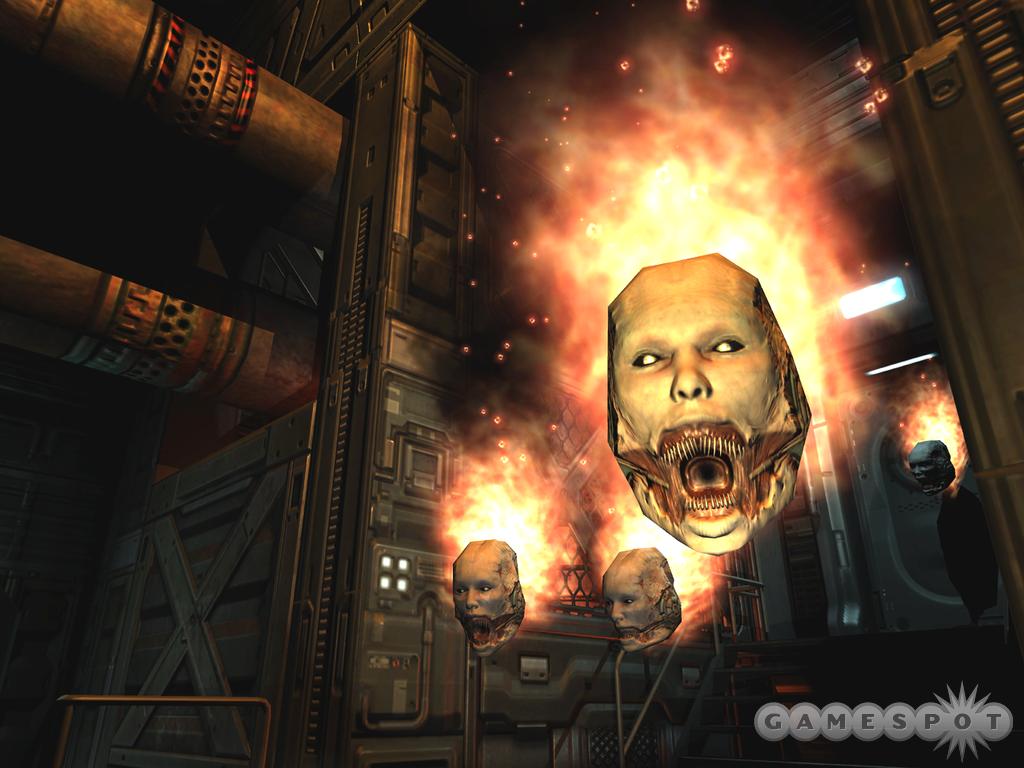
Granted, most people already understand that there's no such thing as a future-proof computer. PC gamers, especially, have been around long enough to know that the top-of-the-line $399 ATI Radeon 9800 Pro graphics card could become a $199 steal just a year later. Of course, by then your longing gaze will have already shifted away from that Anna Kournikova 9800 Pro over to a new Maria Sharapova 6800 GT.
Today's PC gamers understand that buying hardware is like catching a falling knife, but that's where a nouveau style of future-proofing comes into play. Buyers who are trying to get the most possible use from their hardware attempt to time their upgrades by picking equipment in preparation for high-profile game releases. The logic is understandable. If you're going to put down a stack of bills for a new video card, why not pick one that will be able to run Doom 3 and Half-Life 2? The trouble is that people have been upgrading for Doom 3 since the GeForce 3.

There's too much uncertainty in upgrading for the future. Game titles can and will be delayed. It's also difficult to predict how your hardware will perform with unreleased games. Even professional hardware review sites have a hard time measuring the performance of new video card technology, since current game titles don't have built-in support for those forward-looking features.
People are often surprised when I tell them that I still only have a GeForce 4 Ti4600 in my PC system at home. Why, for the love of Far Cry, does a person who has access to all the new graphics hotness choose to run an old-and-busted GeForce 4 at home? It's simple, really. I only buy hardware when I need to improve the performance of a game I already play and enjoy.
My GeForce 4 Ti4600 runs World of Warcraft and Counter-Strike just fine. I've tried World of Warcraft on my Radeon 9800XT at work, and, although the game looks nicer, the hills aren't nearly shiny enough to convince me to buy a new video card for my home machine.
Aside from my recent massively multiplayer online role-playing game defection, I'm primarily an online first-person-shooter player. When I evaluate a new FPS, I mainly concentrate on gameplay and online competition. For the most part, I'm willing to sacrifice image quality for frame rate, since your frames per second can have a significant impact on your spot on the leaderboard. I buy hardware when it helps me win. If I find that a new video card can help improve my frame rate and move the performance bottleneck back to the CPU, that's the card I'm going to buy.
Like many other Counter-Strike players, I'm eagerly awaiting Half-Life 2 and Counter-Strike Source. I can't count out Doom 3 either. Even though id has stated that online play will feature only two-to-four players, we might see a mod or licensee that offers a compelling online environment. Doom 3 will be out next month, and Half-Life 2 shouldn't be too far behind, but this doesn't mean that I'm running out to buy a new card right now. I'll wait until the games are released, figure out which game engine is most likely to monopolize all my free time, and then upgrade my machine to maximize its performance.
This should give ATI and Nvidia plenty of time to polish up the drivers and get more cards in to the retail channel. Who knows? We might even see a couple of Radeon X800 or GeForce 6800 deals by then.
| Ryan Mac Donald Executive Producer, GameSpot Live |
The Games of Our Lives
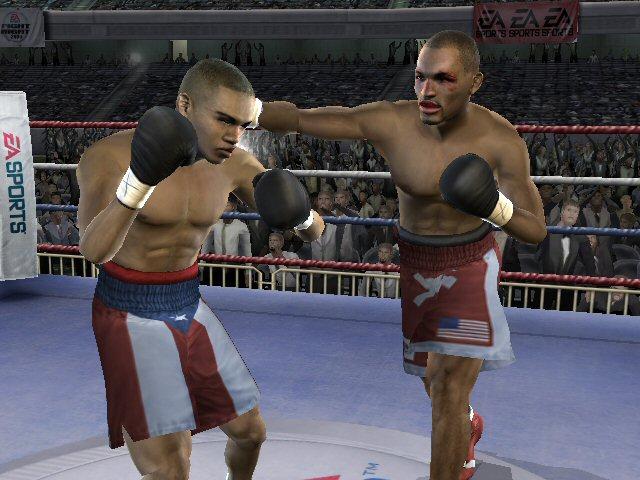
Over the past few weeks, I've somehow managed to actually set aside some free time to play games--which, as a father and executive producer of GameSpot Live, are a bit of a feat in and of itself. When the chance to play games for fun arises, I find myself falling back on the faithful three: Fight Night 2004, Counter-Strike, and Battlefield Vietnam. Don't get me wrong, now, more recent games like Spider-Man 2, The Chronicles of Riddick: Escape from Butcher Bay, and Karaoke Revolution 2 have been able to hold my attention for short bursts. But, eventually, I always find my way back to the faithful three.
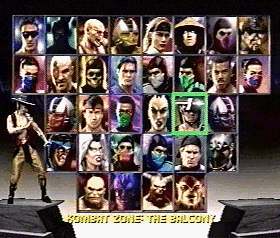
Most nights, you can find me on the East Coast Server 1 in Fight Night 2004, pugilizing under the name ironmacd. I just recently hit the 200 fight mark, which means that I've actually faced over 200 different opponents online. It's a nice milestone, though there are players with win/loss records that tally up to over 700 fights, which puts me in my place pretty quick. Though I'd enjoy reminiscing over other personal video game triumphs, what I'm really wondering about is the real longevity of these games. Are Fight Night, Counter-Strike, or Battlefield games that I will enjoy for the rest of my life?
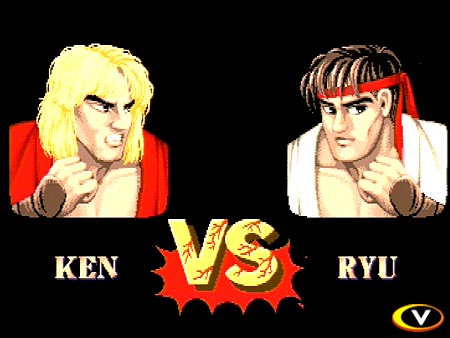
Over the course of my life, I've played hundreds, if not thousands, of different games. Some I put down as quickly as I pick up, others stick around for a little while, and a very, very select few last well beyond their intended life cycle. Everyone has those games that, for whatever reason, have remained in active rotation for years and years. I, personally, have been playing Street Fighter II and Mortal Kombat, in one form or another, for the better part of the last decade. SFII and MK were obviously pioneers in the fighting game genre, and both have certainly helped to pave the way for a whole lot of clones that I am sure I spent a considerable amount of time playing as well. Are these the innovative qualities that keep me coming back for decades at a time? And, if so, do the faithful three have enough of these qualities to join the ranks of Street Fighter II and Mortal Kombat?
Don't take this as a cop out, but only time will tell the long-term fate of these games in the context of my personal gaming habit. But, at the moment, Counter-Strike and Battlefield Vietnam are filling the void that Street Fighter II and Mortal Kombat did in my teen years. As online gaming continues to grow, it will continue to foster competition between strangers that would otherwise never cross paths. Head-to-head competition was something I previously had to go to arcades to get, but now, with games like Fight Night 2004, I don't have to leave my couch.
| Tyler Winegarner Associate Producer, GameSpot Live |
Here Comes a New Challenger!
I've always liked fighting games. Honest. From the first time I saw a Street Fighter II machine, I was fascinated; I'd never seen a game loaded with so much depth in its controls. The characters looked great, they were animated well, the action was fast, and it always drew a crowd. Admittedly, it appealed to my competitive sensibilities as well. I recall that I used to walk about 20 minutes across town from my house to the 7-11 where the closest Street Fighter machine was, then later, there was a Mortal Kombat machine. I must have spent countless quarters of my allowance and chore money in that machine. The regrettable truth about all of it is that for all the money I've spent, I've got nothing to show for it. I absolutely suck at fighting games.
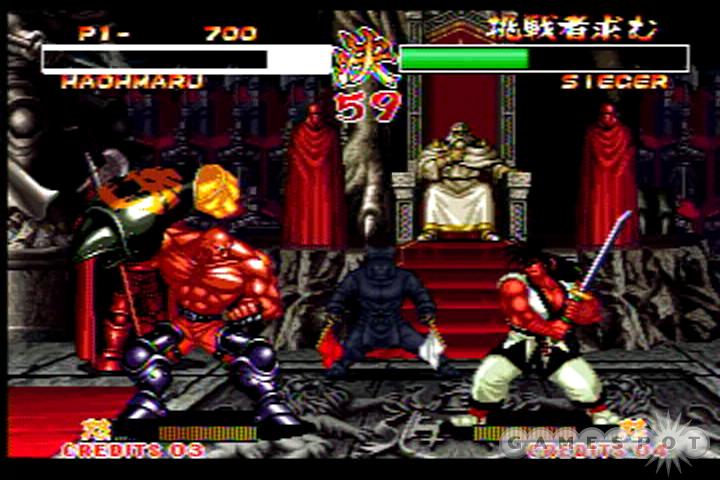

Ok, well, I don't suck at all fighting games--just the 2D ones. I'd always wanted to imagine that it was something about how my brain just processes the reactions more effectively when they are in a 3D space. I took this pondering to one of our experts here at the office, Mr. Greg Kasavin, and he explained it like this:
"Well, the 3D games were just a lot easier than the old 2D fighters."
Oh. So what he's telling me is that I still suck. I guess it was probably a good indication when I was learning Blanka back in my Street Fighter II days and I still had a hard time beating anyone, even the computer, with reportedly the cheapest of any of the characters. But on the bright side, at least the learning is now cheap. Although I don't really have the foggiest hope of taking down Mr. Gerstmann in UMK3, if I can become competent in Samurai Shodown II, I'll at least feel like I've managed to fill a gap in my gaming competency. Until then, if any one of these guys here in the office wants to go toe to toe in MotoGP 2 or Rallisport Challenge 2, they're all mine.
| Cory Birdsong GuestSpotter |
Best. Game. Ever.
Final Fantasy VII recently won the "Best Game Ever" contest over at GameFAQs. Organized as a series of tournament-style polls arranged by console generation, the final two were both RPGs--and were both made by Squaresoft, no less. I find it interesting that such a peculiar style of game as the Japanese RPG could be so popular, though I do have to take into account the enthusiast audience that tends to visit GameFAQs. There are so many off-putting elements to the average Final Fantasy game that I'm still surprised at the mainstream popularity they've managed to garner. For me, the random battles with invisible enemies are jarring, the menu-driven combat is antiquated, special-move cinematics are drawn out and identical every single time, and trying to initiate real-time combat in this menu-based structure is one of the most ridiculous notions I've ever run across.
Most genres evolve to take advantage of new hardware technology, but Japanese RPGs seem happy to take it easy. Games they may be, but balanced play experiences they are definitely not. A bunch of menu-based tactical decisions attached to a plot cannot be the best our hobby has to offer, as fun as the experience may (or may not) be. The "Best Game Ever" needs excellence in design, and resorting to using menus to drive gameplay so heavily in days of controllers with multiple analog sticks, and 16 possible assignable functions, is a bit outdated. These are, in my opinion, some general guidelines to what the absolute best of our hobby would need to offer. I'm not saying that the only great games are the ones that conform to these criteria, nor am I saying that all games that do conform to these are in the upper echelon of titles. With that said, here we go:
Graphics, animation, sound, and music need to be technologically advanced enough to live up to the vision of the designer. This doesn't mean ultra-advanced graphics, but it does mean no graphical slowdown. Shining example of goodness: The Legend of Zelda: A Link to the Past. Few games have aged so gracefully, graphically or otherwise. Few games have as extraordinarily moody an opening as well, and it stands as a testament to the quality and style that can be produced with sprite-based 2D graphics and simple synthesized sound.
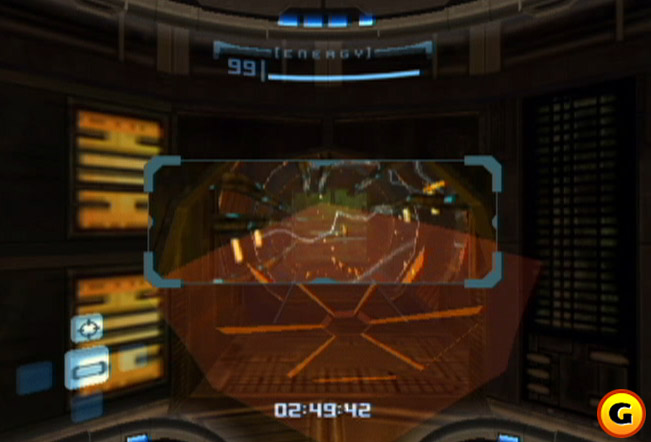
A reasonably designed and implemented save system is necessary. Quicksaving is bad, but not having checkpoints or save stations multiple times a level, at reasonable intervals, is much worse. Shining example of goodness: Halo. The checkpoints are all well spaced so that you're never frustrated. You don't have to keep a corner of your brain devoted to reminding yourself to quicksave after every skirmish; you can fully immerse yourself in the gameworld.
Controls that aren't overly complicated, and allow the gamer to easily accomplish basic tasks required by the game. Shining example of badness: Resident Evil. Why does my character control like a bulldozer? Why can't I aim in more than three directions: up, straight, and down? Why does my character pause for a moment before turning around? Why can I not move and spin at the same time? Some would say that this increases the suspense of the game. I would say that this is artificially manufacturing suspense through bad game design.
The camera must never be a direct cause of death or failure, and the less interactive the camera system is, the better. Shining example of goodness: Prince of Persia: The Sands of Time. This game has one of the more ingenious camera systems I've seen in a while. Very, very rarely does it screw up within its scripting, the player almost never has to adjust it, and I can't remember a time the camera caused me to fall to my death. While doing all of the above, the camera subtly points the player in the direction he needs to go next. The combat camera is remarkable as well, allowing the player to keep track of the Prince extremely well, despite his acrobatic tendencies, and it cuts to close-ups of certain combat situations.
The game cannot be overly long. This is quite the opposite of what most would say, but I feel that brevity is a concept lost on many game designers. Movies routinely get edited down, removing scenes that don't work or disrupt the flow of the film. Games should be no different, and if a section of the game doesn't work, it should be removed. Ideally, once the game was finished, then you might be able to turn on some kind of branching feature that would allow you to place the removed material back into the game to experience how it might have been. Shining example of goodness: Rez. "Rez is pretty short, but that was the best hour of my life." Though it only has four main levels, and a hidden fifth one, they are all excellent in design and presentation. Sure, they could have stretched them out by making more enemies appear in between those cubes of light, or thrown together some extra levels to increase the game's length, but the overall experience of the game would have suffered. A concise feel to the entire experience. The entire game should present a uniform look and feel, from the title screen to the pause menu to the end credits. Shining example of goodness: SSX 3. The entire game sells itself and its over-the-top world remarkably well. The soundtrack is a perfect mixed tape for snowboarding. The DJ is never grating and he's in the game from the intro video. There's a temperature reading in the corner of the start menu that varies depending on where you are on the mountain. 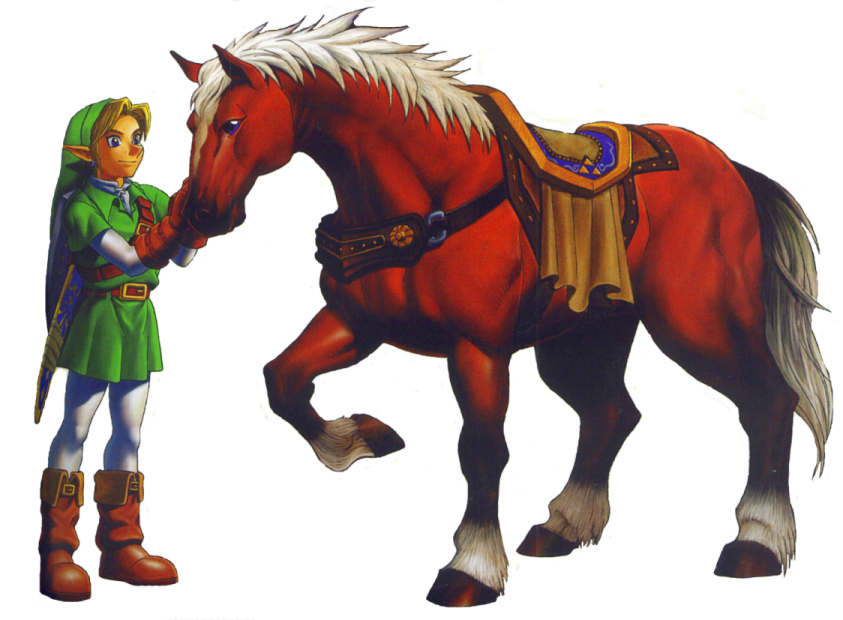
Above all else, excellence in game design and balance throughout. This means clever puzzles, challenging combat, and no sections of the game that are a drag to play. Shining example of goodness: The Legend of Zelda: Ocarina of Time. There is no bad part to this game. From beginning to end, it's a pillar of perfection, and a monument to just how amazing gaming can be. I mean, you had a damn horse.
Got a news tip or want to contact us directly? Email news@gamespot.com
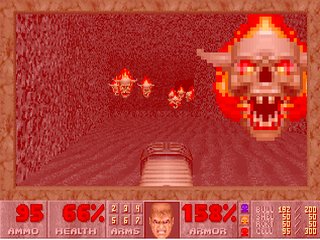
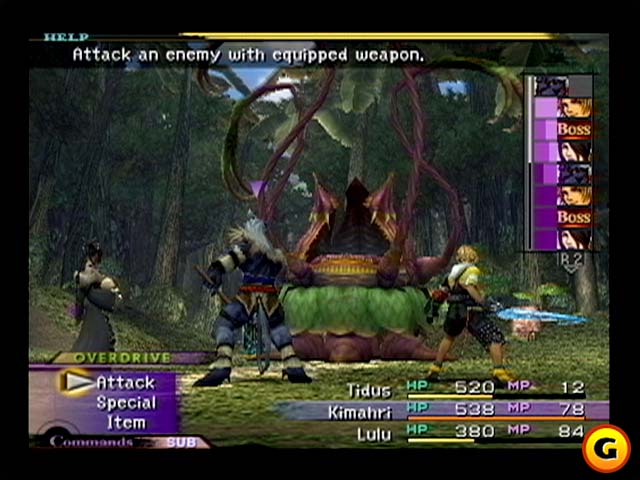
Join the conversation